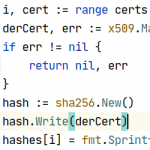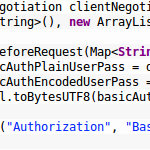
Go: Calculating public key hashes for public key pinning in curl
Something occurred to me the other day. This is my blog, and that means I can write about whatever I want. Now you may think that’s totally obvious, but it’s not. For the longest time I wouldn’t blog about anything that I didn’t deem blog-worthy. Small things, like “this is a cool function I found” or “I learned this thing today”, were not blog-worthy in my mind for some reason.
Well today I am changing that. I like writing, but not necessarily so much that I always want to write a super long post. Sometimes, things should be short. Like this one.
So in this super short post I’m gonna show you a cool thing I figured out: How to calculate the the value that curls --pinnedpubkey option needs in Go.








Recent Comments